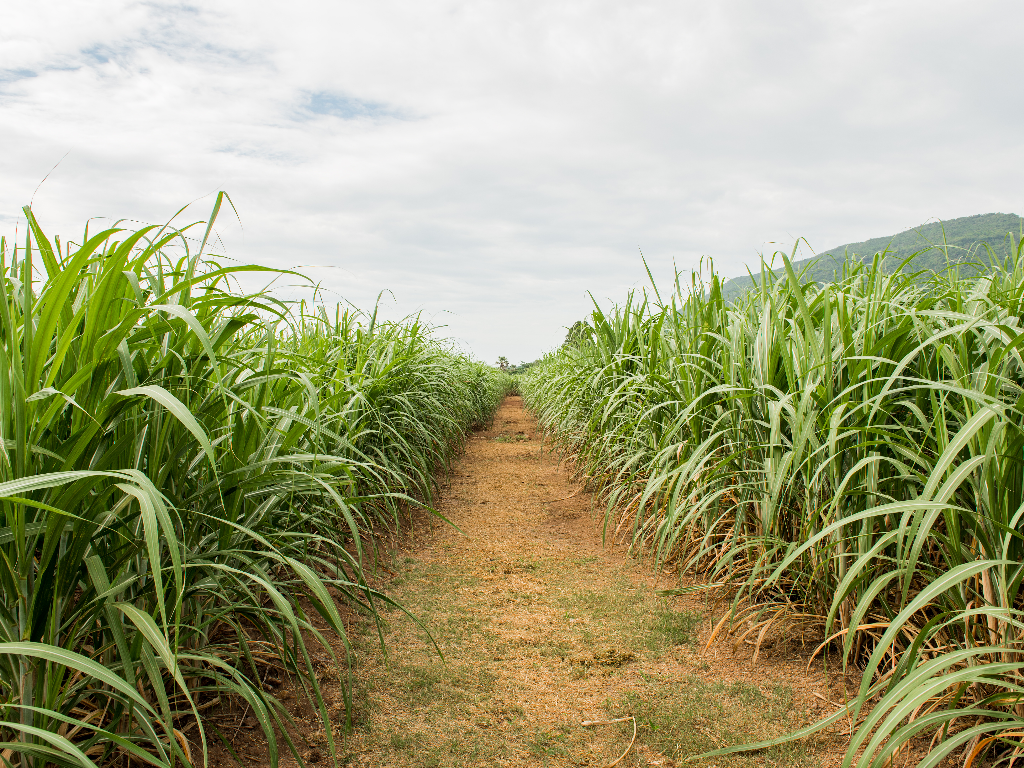By Etherly Barasa
Why Sugarcane Is One of the Most Efficient Plants on Earth
When it comes to converting sunlight into usable energy, not all plants are created equal. Among the most efficient is sugarcane, a tall, tropical grass that powers everything from biofuel production to sweeteners in our favorite foods. But what makes sugarcane such a photosynthetic powerhouse? The answer lies in its biology, specifically its classification as a C4 plant.
What Is a C4 Plant?
To understand sugarcane’s superpowers, it helps to know a little about how plants carry out photosynthesis, the process through which they convert sunlight, water, and carbon dioxide into energy. Most plants use a method known as the C3 pathway, named after the three-carbon molecule that’s the first stable product of the cycle.
However, sugarcane and a select group of plants use the C4 pathway, a more advanced method that involves a two-step process for capturing carbon dioxide. This method dramatically reduces a wasteful process called photorespiration, which occurs when oxygen is mistakenly taken up by the plant instead of carbon dioxide.
C4 plants like sugarcane have evolved to separate the initial capture of carbon dioxide from the rest of the photosynthetic process. First, CO₂ is captured in specialized mesophyll cells and converted into a four-carbon compound hence the name C4. This compound is then shuttled to bundle sheath cells, where the CO₂ is released and refixed via the traditional Calvin cycle. This spatial separation allows the plant to concentrate CO₂ around the enzyme RuBisCO, reducing the chances of oxygen competing for the same site.
This adaptation significantly increases photosynthetic efficiency, particularly under conditions of high temperature and intense sunlight, the environment where sugarcane thrives.
Kranz Anatomy: The Cellular Superhighway
Sugarcane's success also owes a lot to its internal structure. Like other C4 plants, sugarcane has what's known as Kranz anatomy from the German word for “wreath” which refers to the circular arrangement of cells around the vascular bundles in the leaf. This anatomical feature is essential for the two-step carbon fixation process, allowing for efficient communication between the mesophyll and bundle sheath cells.
High Biomass, High Yield
Thanks to the C4 pathway and Kranz anatomy, sugarcane achieves remarkably high biomass production, making it one of the most productive crops in the world. According to the Food and Agriculture Organization (FAO), sugarcane is grown on more than 26 million hectares globally and produces over 1.9 billion tons annually more than any other crop by weight (FAO, 2022).
This high yield is not only good for food production but also for bioenergy. Sugarcane is a primary feedstock for ethanol in countries like Brazil, where it’s used as a renewable alternative to fossil fuels. Its fast growth and high sugar content make it ideal for fermentation into alcohol.
Other important crops, like maize and sorghum, also use the C4 pathway.
Why It Matters in a Changing Climate
With climate change causing more frequent droughts and rising temperatures, crops that can handle heat and make the most of limited water are becoming more valuable. Sugarcane’s ability to thrive in these conditions makes it not only an agricultural asset but also a potential climate-resilient crop.
Its efficient carbon capture capabilities also mean that sugarcane can play a role in carbon sequestration, helping to offset greenhouse gas emissions when grown and managed sustainably.
Conclusion
From its intricate leaf anatomy to its turbo charged photosynthetic process, sugarcane is more than just a source of sweetness, it’s a marvel of evolution. Its C4 pathway gives it a significant edge over other plants, making it a cornerstone crop for the future of sustainable agriculture and energy. As we look for ways to feed a growing global population and combat climate change, understanding and leveraging the natural efficiencies of plants like sugarcane could be a key part of the solution.
References:
- Sage, R. F. (2004). "The evolution of C4 photosynthesis." New Phytologist, 161(2), 341–370. https://doi.org/10.1111/j.1469-8137.2004.00974.x
- FAO. (2022). "FAOSTAT Statistical Database." Food and Agriculture Organization of the United Nations. https://www.fao.org/statistics
- United Nations Environment Programme (UNEP). (2020). The State of the World's Plants and Fungi. https://www.unep.org/resources/report/state-worlds-plants-and-fungi-2020
- Taiz, L., Zeiger, E., Møller, I. M., & Murphy, A. (2015). Plant Physiology and Development (6th ed.). Sinauer Associates.

